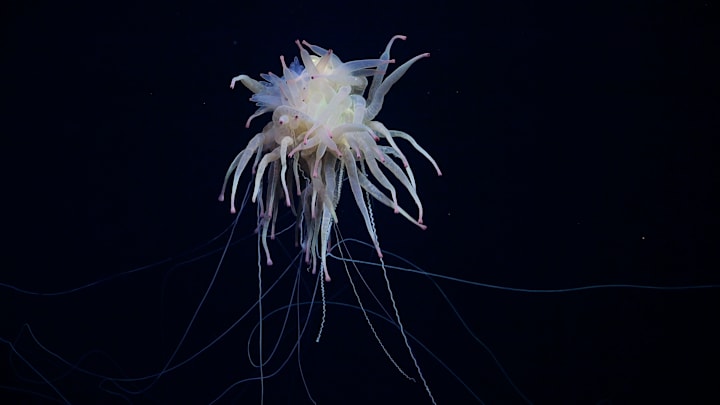The ocean is a mysterious place. Although the sea covers 71 percent of the Earth’s surface, humanity has only explored 5 percent. Lurking in the depths are many creatures that look like they belong on an alien planet—including this aquatic ”flying spaghetti monster.”
Researchers on an expedition led by Schmidt Ocean Institute encountered the strange, sea-urchin-like organism—officially known as Bathyphysa conifera—in late August. You can view it and other unusual species documented on the trip in FOX Weather’s YouTube video below.
The camera managed to get a clear shot of the spaghetti monster moving its pink-tipped appendages. According to Live Science, a remotely operated vehicle (ROV) captured footage of the marine animal at about 2200 feet deep as it moved along the Nazca Ridge off the coast of Chile in the southeastern Pacific Ocean. The organisms are known to live between 3300 and 9900 feet beneath the ocean’s surface. Although it appears small in the video, the carnivorous spaghetti monster can grow several feet long.
Bathyphysa conifera are classified as a colonial species, meaning they are a cluster of individuals connected by tissue that work together to create a larger organism. Each individual must also carry out a function for the entire colony to survive. The best-known colonial organisms are corals, which can form massive bodies bigger than buses.
This expedition proved to be a jackpot for oceanographers. In addition to the flying spaghetti monster, the researchers filmed a live Promachoteuthis squid for the first time. Only a few of these specimens have been collected, most of which are from the 1800s. A Casper octopus was also spotted, marking the first time the creature has been recorded in the Southern Pacific. Scientists observed 20 species never before seen on the Nazca and Salas y Gómez Ridges—which is still a modest amount compared to the 150 the team identified in the area for the first time earlier this year.
Read More About Sea Animals:
